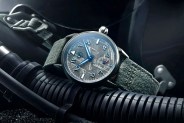Most discussions about watches and their value begin and end with the movement: Swiss versus Japanese, in-house versus outsourced, finishing and complications. But in reality, the movement is only part of the story. All too often overlooked in these discussions is the humble watch case, which can be equally artful, interesting, and difficult to produce. Often, it can make up more of the value of the watch than the motor inside.
Design and Materials
The case has two simple functions: protect the movement from dust and moisture and fit nicely on a wrist. Early versions were merely pocketwatch cases with wires soldered on each end through which a strap could be attached — there was little attention given to aesthetics outside of perhaps some engraving. But as the wristwatch gained popularity in the Roaring Twenties and Jazz Age, watch cases quickly became objects of beauty in and of themselves. This was the era of the Cartier Tank, the Jaeger-LeCoultre Reverso and the Gruen Curvex, Art Deco watches with slim rectangular cases.
In the 1950s the sports watch came into its own; dive watches and chronographs necessitated larger cases and rotating bezels. By the ‘60s and ‘70s, case-making had matured to the point where almost any shape was possible. Heuer released the innovative square Monaco, OMEGA turned out countless wacky bulbous shapes and the space age inspired some fantastical creations from brands far and wide.
Materials have played an increasing role in watch cases as well. Steel, gold (solid or plated) and platinum are the stalwart metals, but in the mid-70s, titanium emerged as a superior choice for timepieces designed for rough duty. IWC and Seiko were pioneers of that metal, driven largely by the needs of military divers, who required anti-magnetic and highly corrosion-resistant timepieces for their underwater work. Bremont, which has always hardened its steel cases in the same factory where Rolls-Royce does the same to its jet engine turbines, released two watches using proprietary steel and titanium alloys from its partner, Boeing.

SUB 300 Carbon Aqua Lung
